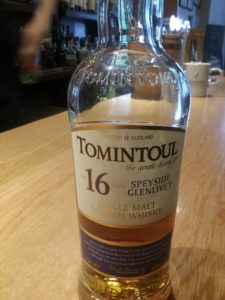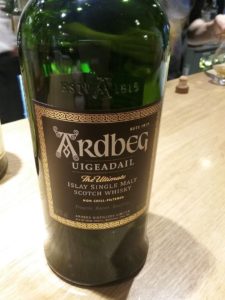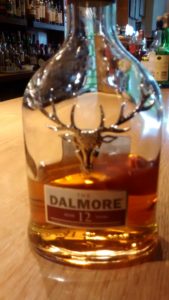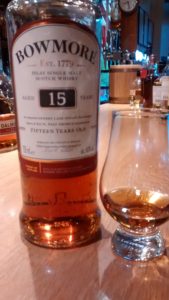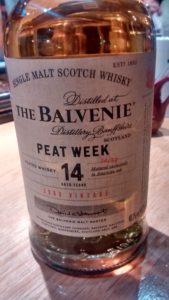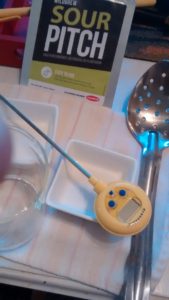Greetings from the Highlander Inn in Craigellachie, Scotland. Add this place to your bucket list if you are a whisky lover. This wee town is in the heart of Speyside. The bar here at the Highlander has near 400 expressions of whisky, so needless to say, I have been doing ample research.
First up….(and not shown here) is Glenfiddich 15 Year Old Solera Cask. Finally!!!!
I understand this process thanks to a chance encounter with a Glenfiddich Brand Ambassador in the bar a few moments ago. How it works is, Glenfiddich is aged in 3 different cask types for 15 years. This aged material is then dumped into an 11,000 gallon vat where “marrying” takes place. About 1/2 of the vat is emptied for bottling. The vat is then re-filled with more 15 year old product. Half is emptied off and bottled….and so on…repeat….repeat….
In my other research, I have found that I quite enjoy Tomintoul 16 year old. This distillery is Japanese owned and not open to the public.
I am starting to dip a wee toe into the Islay peated category. I quite enjoyed Ardbeg Uigedail. The peat is nicely balanced by the sweetness picked up from aging in ex-sherry casks.
The Bowmore 15 year old is also an Islay product but the peat is toned down a bit. A very nice dram to finish a meal with.
The Dalmore 12 year old is likewise a nice product that displays excellent balance on the palatte.
Lastly, in another chance encounter, I met the Brand Ambassador for Balvenie. Yes, we get Balvenie in Canada, but we do not get Peat Week. What happens at the distillery is there is an annual shutdown for maintenance. Prior to this event, the distillery runs batches of highly peated malt through the process. The result is Peat Week Whisky. I tried the 14 year old expression and 30 minutes later I am still savoring the profound balance of peat and sweet on my palate. A very nice pre-bedtime dram to be sure.
I will wrap up these thoughts by saying that if you are contemplating a craft distillery – you have got to make good whisky. Otherwise, don’t make it at all. As I stress in the Workshops, adding sticks and cubes and chips to make a distillate turn brown just ain’t gonna’ cut it. We live in a global society where goods and services flow back and forth. If the consumer does not like your product, it will not matter that it is local. That consumer will go back to his/her big name brand whisky in a big hurry.
Whisky is 500 years ols and Speyside is where it began. Treat yourself to a wee trip here and sample what real whisky is all about ( or as I am reminded….all abooot in my Canadian accent).
Until Next Time….
Cheers

